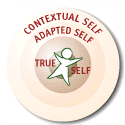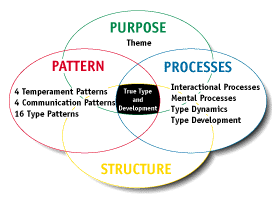Systems are not concretely visible. Only in the last 40 years have behavioral scientists really been learning to “see” systems, especially human systems. Systems are patterns of relationships that are organized. They have “rules” that govern their behavior. The pattern of organization is not imposed from outside, but “comes with” the system at the moment of creation. Thus, the idea of self-organizing. It is the system itself that organizes itself around some sort of operating principle.
What is a Self-Organizing System?
Systems are “driven” to operate in certain ways. If we can understand the inherent operating principles and work with them, we can save energy. If we try to force a system to behave in ways inconsistent with its nature, we spend energy and encounter resistance.
The operating principles are often referred to as attractors. These attractors are like magnets that attract certain movements or processes within the system. As we attempt to understand the self of the self-organizing system we seek to understand these organizing forces or attractors.
What is the “Self” of the Self-Organizing System
We look at this “self” as inherent. This means it is there from the beginning-inborn. Does it mean we cannot change? No, we are born with a tendency to behave in certain ways, yet we have the capability to adapt, grow and develop. In the very beginning was our True Self-the self we were intended to be, the self that is in our Genes, our DNA. But as we interact with the environment, we develop an Adapted Self that may be either more or less consistent with this True Self. We also have a Contextual Self that represents our current behavior. It too might be in sync with our True Selves or it may be quite different. That depends on what the situation at the time requires.

Temperament patterns describe four basic organizing principles (attractors) that can exist as anyone of these “Selves”. These patterns also exist at different levels of systems: individual, group, or organization. Thus learning these patterns helps us understand the self of any self-organizing system As humans we have the unique ability to be self-aware. Given this capability, it is imperative that we have a language to describe our “self.”
Knowing the “Self”
Systems cannot be measured, they can only be mapped. You cannot know or describe a system in terms of its traits, especially in quantitative terms. You cannot know a complex living system in any definite way, since it is constantly changing, adapting and evolving. Any one personality instrument will only give one data point. When mapping a system, we can only have approximate measurement and so we “triangulate” or see where several indicators from multiple models meet. Then we have a good idea of what the system is like.
Humans are very complex systems and cannot be understood in terms of a few simple formulas, yet there are some simple, easy to understand principles or dynamics that help us understand ourselves and others. Fritjof Capra has said that to understand a living system, you have to look at the pattern, the processes and the structure of the system. There is now evidence of structural differences related to personality-temperament and mental processes. We do not address structure directly, except to follow the rapidly advancing research. We address pattern and process directly using several different lenses in our multiple model approach (triangulation).

In addition to Capra’s principles we add “Purpose”. Purpose tells us the theme of the pattern. Pattern tells us the configuration of relationships of the essential elements. Structure tells us how the pattern is physically expressed. Processes tell us the activities the system engages in. When all of these intersect in the same “place” (type code), we can be more sure we have accurately revealed the “self” of the system.
